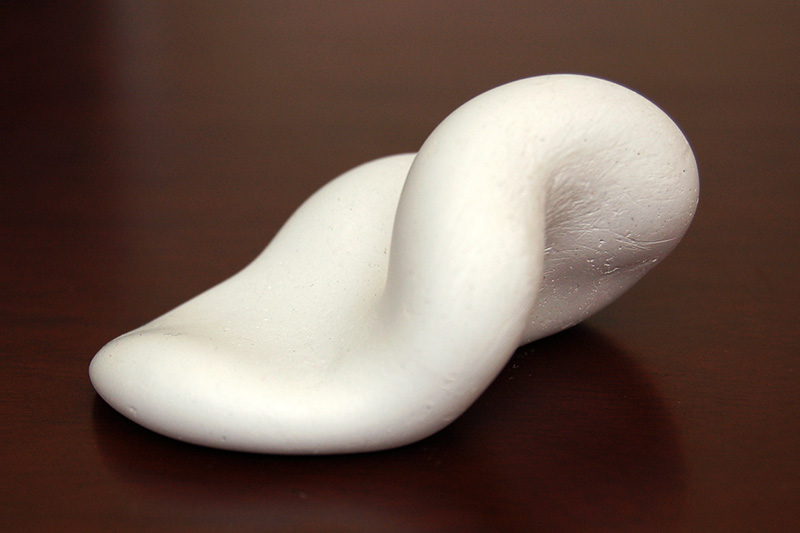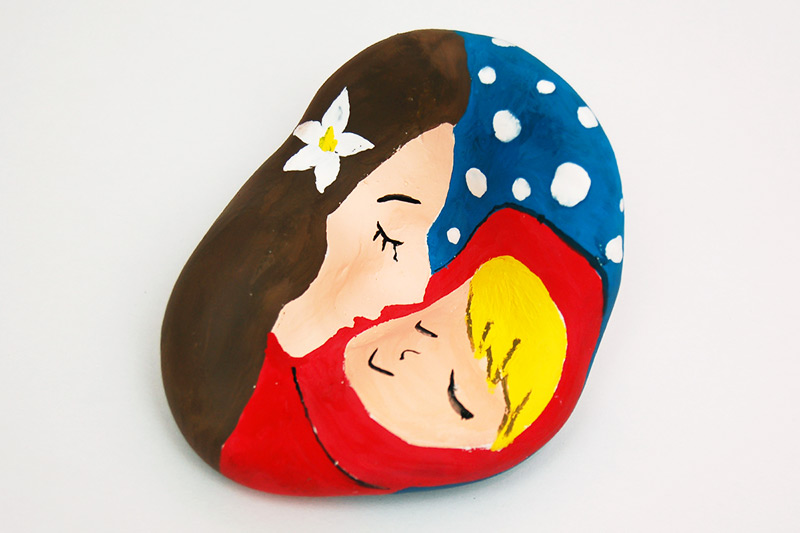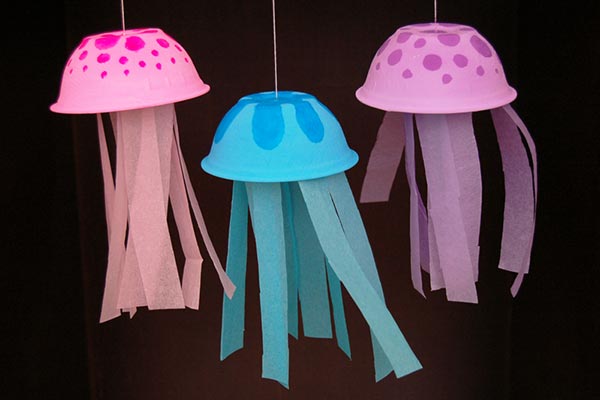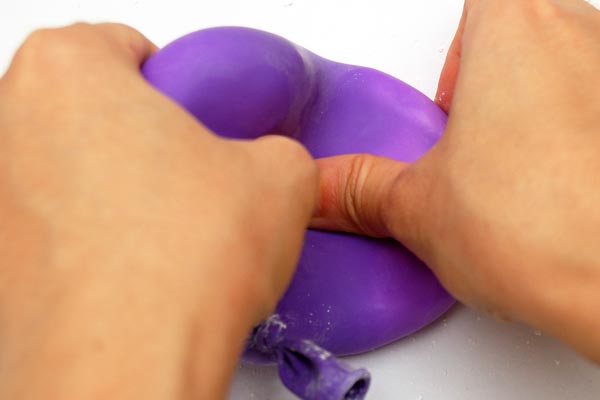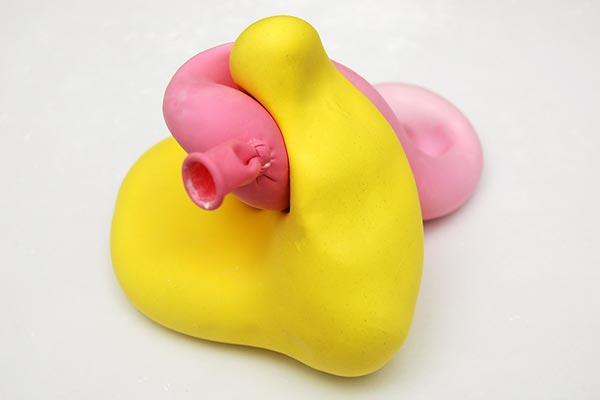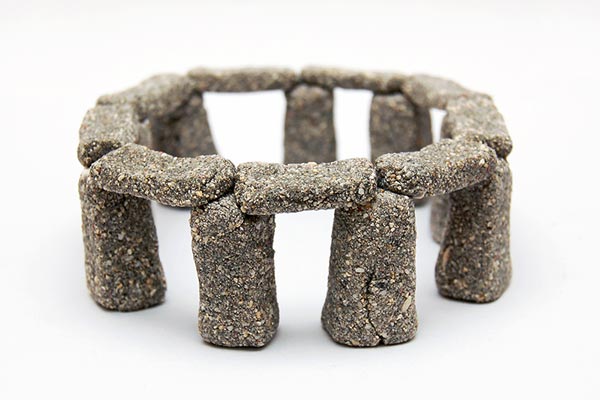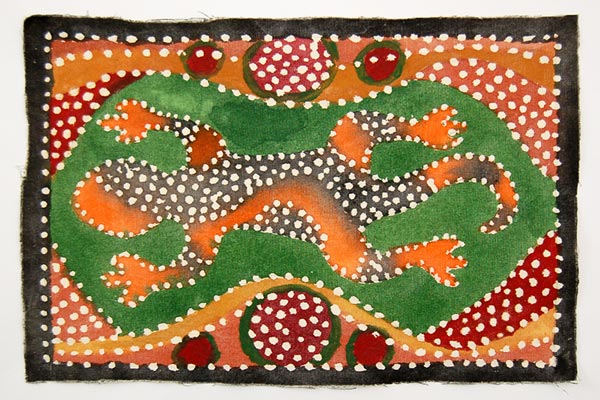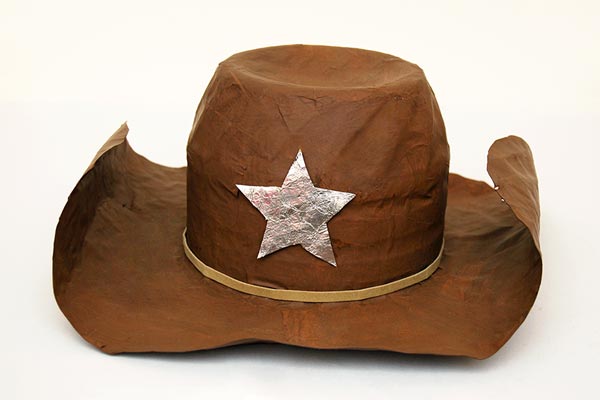Plaster of Paris Freeform Sculpture
Featured Crafts
Supplies Needed
- Oval balloon (medium or large)
- Squeeze bottle
- Plaster of Paris powder
- Water
- Mixing container (paper bowl or cardboard milk carton)
- Spoon
- Funnel
- Medium grit sandpaper
- Scissors
- Paint brush (optional)
- Acrylic paint (optional)
- Clear acrylic sealer or shellac
Safety Tips
- Never mix plaster of paris with your bare hands.
- Plaster of paris powder is extremely light and fine. Caution should be taken to avoid getting the powder into the eyes and nose.
- Kids will need adult supervision.
- Do not throw any leftover plaster of paris mixture into the drain, it will clog the pipes. Instead, let the mixture harden in the mixing container, then throw it into a trash can.
STEPS
1Prepare the balloon.
One of the most important things in making this project is to find high-quality medium-sized or large balloons. The balloon should be sturdy enough to hold the plaster of paris mixture and withstand stretching and pulling as you mold it into a freeform sculpture.
Inflate the balloon to stretch out its walls, then deflate it.
3Mix the plaster of paris.
This project can get quite messy so make sure to cover your work area with a large mat or some newspapers.
Mix 2 cups plaster of paris powder with 1 cup water or follow your brand's package instructions. Check out our Mixing Plaster of Paris page for mixing instructions with photos.
4Pour the mixture into the bottle.
Use a funnel to pour the mixture into the squeeze bottle. If you used a paper bowl or an empty milk carton as a mixing container, you won't need a funnel—just pinch the bowl or carton at the mouth to create a lip, then carefully pour the contents into the squeeze bottle.
6Fill the balloon with mixture.
Turn the bottle upside-down and give it one big squeeze to fill the mixture into the balloon. Some notes on doing this step:
- Squeezing repeatedly will just result in the mixture going back and forth between the bottle and the balloon. Giving it one big squeeze seems to work best.
- It's easier to fill the balloon when the squeeze bottle is full of plaster mixture.
- A more squeezable bottle is a big plus.
- A thinner mixture flows better and can be easily filled into the balloon. However, thinning down your mixture means that it will set slower and the resulting sculpture may not be as sturdy.
- You can try filling the balloon directly with just a funnel (cut the top half off a plastic water bottle and use it as a funnel). I haven't tried this, but it can probably work!
7Remove the balloon from the bottle.
Carefully remove the balloon from the squeeze bottle. Release any trapped air by slightly loosening your grip on the balloon's opening. Allow the air to escape until some of the Plaster of Paris mixture is pushed out. This usually is an indication that you have removed all the air inside the balloon.
9Mold the plaster of paris.
The mixture will start to change in both consistency and temperature inside the balloon. When it starts to take on an almost gummy feel, you can start shaping it with your hands. As the plaster starts to solidify, you will notice that it also gives off heat. Finalize the shape of your sculpture before the plaster hardens. Hold the position of your hands until the sculpture sets.
12Sand the rough sections.
This step is optional and you must wear a mask or a bandana to cover your nose and mouth.
Use medium grit sandpaper to smoothen the section where the balloon was tied and any other areas you want to smoothen. Do not blow off the dust to avoid getting them in your eyes and nose.
More Ideas
Paint your sculpture.
After Step 12, let your sculpture cure or dry completely for 48 hours. Because plaster of paris is an extremely porous material, it is important to apply a primer before painting. Apply a coat of acrylic gesso or slightly diluted white glue (3 parts glue to 1 part water). Let the primer to dry thoroughly before painting with acrylic paint. After the paint dries, seal with clear acrylic sealer.
